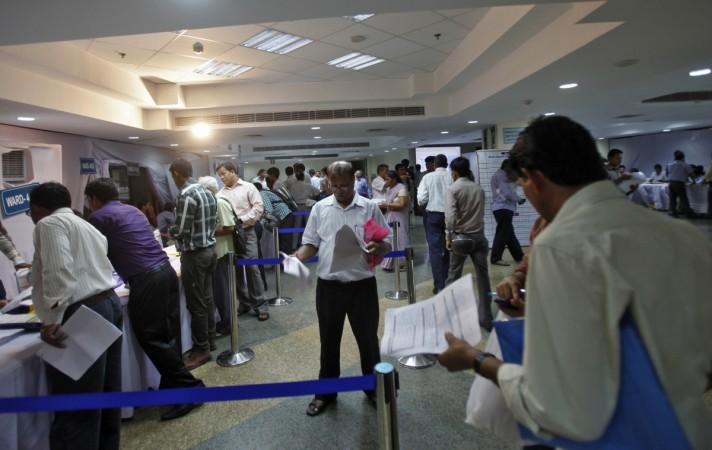
The National Institution for Transforming India (NITI) Aayog is not in favour of raising the income-tax (I-T) exemption limit in the upcoming budget (Budget 2017). Instead, it has expressed a view that the threshold for paying 10 per cent tax be raised from the current Rs 5 lakh to Rs 7 lakh.
This, according to the NITI Aayog, is a better way of expanding tax collection and at the same time, having an equitable approach to augmenting revenues, the Business Standard reported, citing the body's officials. Currently, those with a taxable annual income above Rs 2.5 lakh and up to Rs 5 lakh pay I-T at the rate of 10 per cent.
Read: FM Arun Jaitley provides insights on income tax collection in India
The other two slabs are — taxable annual income from above Rs 5 lakh and up to Rs 10 lakh (tax rate is 20 per cent) and those earning above Rs 20 lakh (tax rate 30 per cent). The exemption limit was left unchanged by Union Finance Minister Arun Jaitley in last year's budget.
A few days ago, consulting firm Deloitte released a Pre-Budget Expectations Survey Report to say that the basic I-T exemption should be increased to Rs 5 lakh per year and the ceiling for claiming deduction under Section 80C should be raised to Rs 2.5 lakh.
"The increase in the slab limit will kick-start savings, which will ultimately lead to increase in investment in the system," the report said.
Demands for raising the exemption limit and extend other incentives are doing the rounds in the run-up to the budget presentation; there is a belief that such measures would stimulate the economy that has taken a hit due to the demonetisation decision of Prime Minister Narendra Modi announced on November 8, 2016.
The impact of the currency ban on the economy was not reflected in the recent FY2017 GDP growth estimates released by the government. The world's fastest-growing economy is expected to expand at 7.1 percent in 2016-17, though projections by analysts after factoring in the demonetisation impact put the growth rate below 7 per cent.
"The sudden decline in money supply and a simultaneous increase in bank deposits is going to adversely impact the consumption demand in the economy in the short term. This, coupled with the adverse impact on real estate/construction and informal sectors, may lead to lowering of GDP growth," India Ratings had said in a note on November 11, 2016.
A projection by Nomura said the growth rate in the early half of calendar year 2017 could even fall below 6 per cent, which will be a 20-year low. "Nomura's CLI for India for early 2017 has slumped to the lowest level since the series started in 1996 and is consistent with GDP growth of below 6%. This suggests that there is downside risk to our Q1 GDP growth projection of 6.9% y-o-y; i.e., near-term growth may fall much more than expected," the financial services group said in its note last month.
Jaitley will be presenting the Union Budget for the next financial year on February 1, 2017.
Earlier this week, the BJP government released the tax collection data for the April-December 2016 period. "The figures for direct tax collections up to December, 2016 show that net collections are at Rs 5.53 lakh crore, which is 12.01% more than the net collections for the corresponding period last year. This collection is 65.3% of the total Budget Estimates of direct taxes for FY 2016-17," the Ministry of Finance said in a statement.







